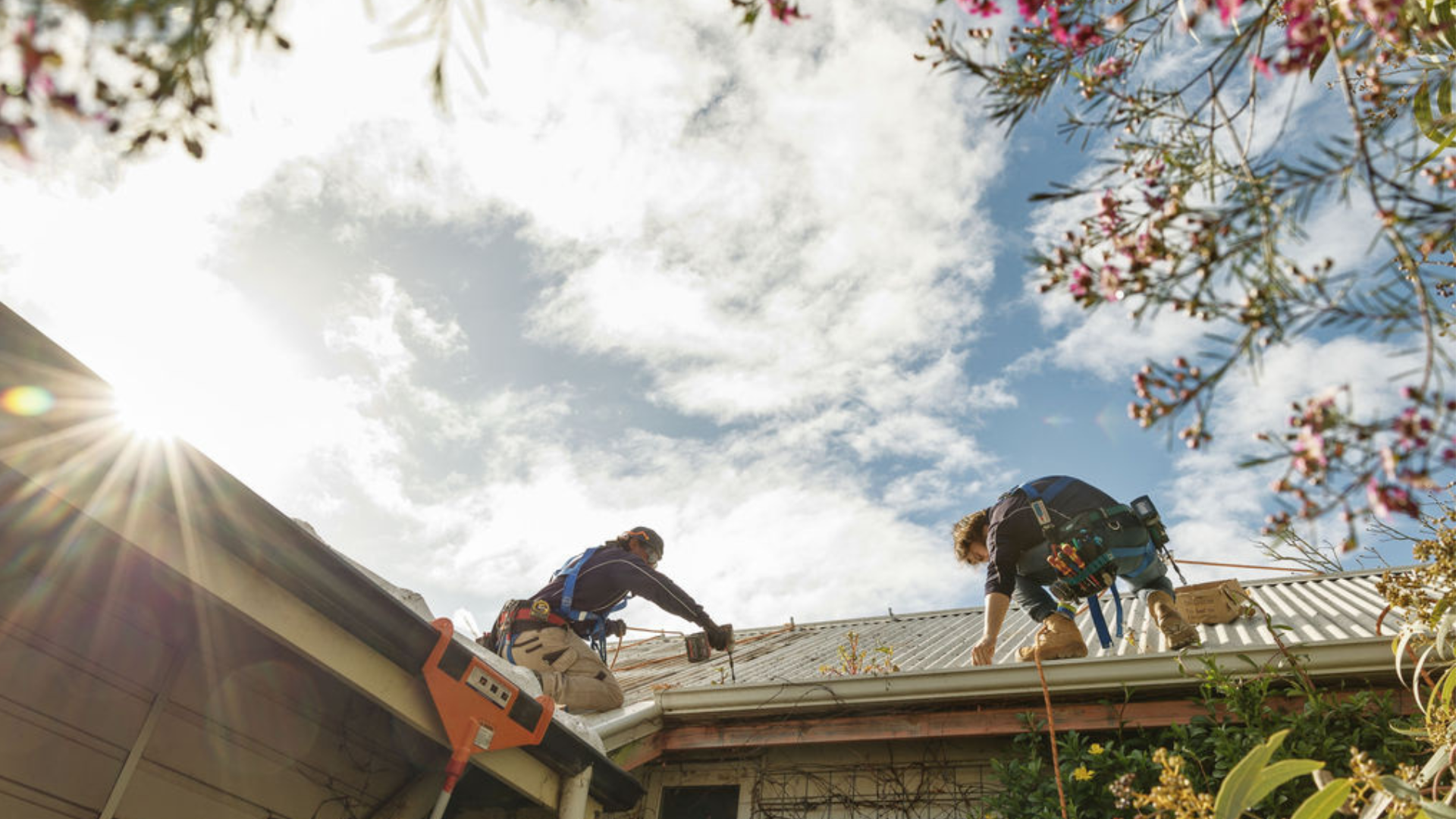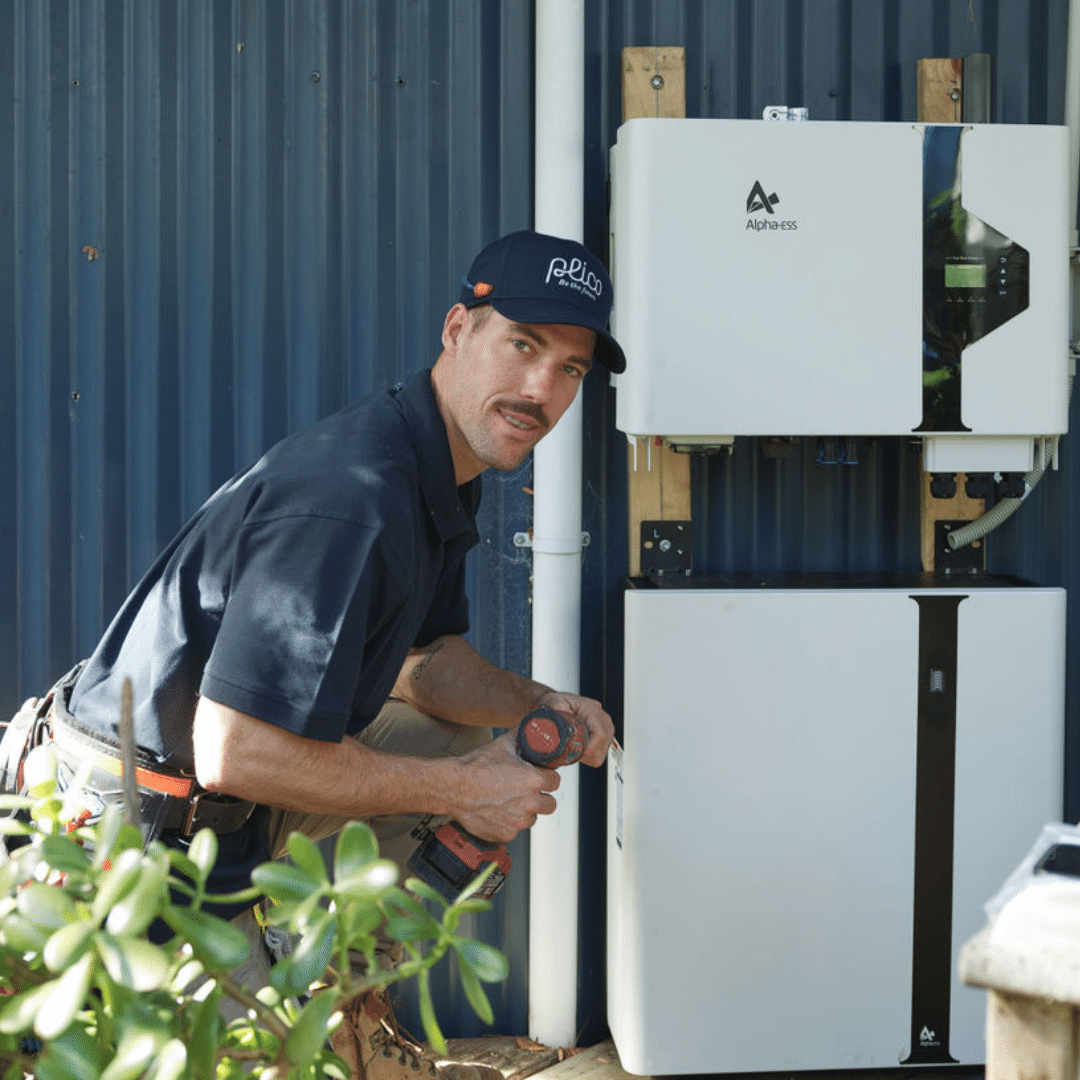The solar system size you need is based on your individual requirements and circumstances. Having a clear idea of what size solar system you require is an important factor when switching to solar. Getting a system that is too large or too small has a negative effect on your overall solar savings. By examining the relevant factors and finding the ideal size, you maximise your investment and minimise the power you’re drawing from the grid, which is what solar is all about.
Why is it important to calculate the correct solar system size?
Figuring out the correct solar system size for your home allows you to maximise your energy savings. If your system is too small, you won’t be able to generate enough power to cover your household energy needs. This means greater reliance on the grid and higher electricity bills. Meanwhile, if your solar system is too large, you won’t receive a good return on your investment. The ideal-sized solar system allows you to cut down your power bills in the most budget-friendly way possible.
What is the average size of a residential solar system in Australia?
Across Australia, the average residential solar system size is 9.3kW. This is based on a solar report by the Australian Energy Council from the second quarter of 2023. While this is a helpful guideline, it might not reflect your household’s own energy needs.
Variables such as your local weather conditions and solar installation costs influence the size of solar systems in different cities or states. For example, the average size of a solar system in Western Australia (WA) is 8.63 kW. This is lower than the national average due to the higher amount of sunlight WA receives, allowing solar panels to generate more power for longer. So when deciding on solar system size, make sure to consider your specific circumstances. A local solar provider with a solid reputation will be able to provide some guidance here.
How do you estimate the right-sized solar system?
You must consider all the relevant variables when estimating the right-sized solar system. The first factors you should look at are your household energy use, your budget and your available roof space. These determine your power needs and limitations. After that, you should also examine the different components of your solar system.
Your solar panels determine how much power your system generates, your inverter determines how much of that power is converted and, if you have batteries, they will store the excess power generated. These components must have compatible sizes for your system to function optimally.
Energy consumption
Your household’s energy consumption is a straightforward indicator of your ideal-sized solar system. The more self-sufficient you can be with your energy, the lower your power bills. Ideally, your solar system will be able to supply a vast majority of the power your household needs during the day, especially in summer.
If you’re not sure of your energy consumption, it’s easy to find out. Simply check your energy bills for the last year and you will have a good estimate. Power use fluctuates seasonally, but by dividing the total yearly power use, you can get a monthly, weekly or daily average consumption level.
Here’s how you can work out what size solar panel system you need using your average daily usage. This is usually provided as units; 1 unit=1 kWh. As a very general rule, 1 kW of solar panels will produce around 4 kWh of electricity each day. So, a 6.6 kW will generate around 26.4 kWh each day. Using your average daily usage (across the entire year to account for seasonal changes) you get an idea of what size system you need.
Of course, you panels won’t cover any electricity you use at night (you need a battery for that). With solar panels being so affordable these days, it’s always a good idea to go bigger if you can. This will help you manage future increases in your energy consumption (that new pool or EV), and means you can store excess in a solar battery or export it to the grid to receive a feed-in tariff.
A quality solar provider will be able to use your energy consumption data to match a suitable sized solar or solar + battery system.
Budget
On the flip side of power consumption is your budget. Where your energy consumption tells you how much power you need, your budget places limits on how much you’ll be able to offset with a solar PV system.
Household incomes vary widely across Australia. In some instances, your ideal-sized solar system may be out of your immediate price range. Even if you installed an undersized system for partial benefit, you still have to deal with the upfront cost of installation. And it will take longer to pay for itself, as you won’t be making as many savings on your power bill.
Here at Plico, we believe everyone should be able to adopt clean energy. That’s why we created an innovative payment model: members get an industry-leading solar only solar + battery or battery only system with no big upfront costs and just one low weekly fee. We taper our solar solutions to a property’s individual needs, ensuring our members maximise their savings.
Browse our solar + battery systems to see which options work for you.
Roof space
Your roof space is another factor that may limit your solar system’s size. Even if you have the budget to pay for your ideal-sized system, it won't work if your roof is too small. Greater roof space allows for the installation of more solar panels, which translates to more usable electricity. If your roof space is limited, you can compensate for this by installing more efficient solar panels.
The orientation of your roof may also determine the size of the solar system you require. If you have less north-facing roof space, you may need to add more panels to maximise production or have your panels tilted (this can increase the installation costs).
Single-phase vs 3-phase power
The power phase used by your household is another factor worth considering for solar system size. Single-phase power refers to a system of electrical transfer that uses one primary wire.
Houses with 3-phase power use three wires, making them better suited to safely handling high power loads. As a result, 3-phase powered homes are often associated with large solar systems. Most households in Australia use single-phase power, but it’s still important to double-check.

How many solar panels do I need?
The amount of solar panels you need depends on several key factors. While solar panels are the powerhouse of your solar system, their characteristics vary. This, in turn, affects their functional power generation. Factors like panel type, size and efficiency all affect the capacity of your solar system. And other variables like orientation and location affect how much of their potential capacity can be utilised. Only after considering all the important aspects of your solar panels, will you know how many to install.
Solar panel type
Solar panel types are divided based on the processes used to manufacture them. A range of different materials and methods are used to create solar panels. This results in solar panels with different characteristics like cost, efficiency and lifespan. Broadly, solar panels are divided into the categories of crystalline, passivated emitter and rear cell (PERC) panels, and thin-film. At Plico, we use mono-crystalline panels for their efficiency and performance.
Learn more about crystalline, PERC, and thin-film panels by reading our article on the different types of solar panels.
Panel size
Size is an important factor because more surface area corresponds to more sunlight being captured. In Australia, the standard size for solar panels is 1.70 m x 1.0 m. However, this varies based on the manufacturer. If you opt for a 60-cell system in a 6 x 10 configuration, it will be around 99 x 167.6cm. On the other hand, a 72-cell system in a 6 x 12 configuration. While they often go hand-in-hand, wattage is a more helpful guideline than the physical size of the panels.
Plico uses Longi Hi-Mo 415 watt panels for their power, performance, and reliability. They feature a split cell technology which reduces production loss from shading and enables higher power and lower hot spot temperature because of low working current. These panels measure 1.1 m x 1.7 m.
Panel number
When you know your household’s energy consumption and the wattage of your chosen solar panels, you can figure out how many panels you need. Simply divide the energy requirements of your household by the wattage of the panels and there you go! Just make sure you’re also considering the limitations of roof space. For example, Plico solutions include 16 panels for a 6.64 kW solar array, 19 for a 7.9 kW system, and 24 panels for a 9.96 kW system.
Panel efficiency
The efficiency of your solar panels is determined by the solar panel type. While different models of panels will have varying quality levels, the broad discrepancies between types are a helpful guideline. PERC is the most efficient solar panel type, followed by monocrystalline, polycrystalline, and finally thin-film. The main contributing factor to a solar panel’s efficiency is the materials it’s composed of.
Panel weight
Weight is a minor factor, but one worth considering nonetheless. Solar panels weigh between 18 and 22 kilograms, on average. Most roofs don’t have trouble handling this amount of weight. However, a roof that is damaged or worn down may cause issues. Luckily, our Plico installers will thoroughly check the condition of the roof before installation, to make sure it’s suitable.
Panel orientation
The orientation of solar panels affects the amount of direct sunlight they can absorb. By making sure your panels have the best orientation, you will get the most from your solar system. Unfortunately, depending on your roof’s shape and position, you may need to employ suboptimal orientation for your panels. This will result in less power being generated by your solar system.
Another potential hindrance is shading from surroundings like neighbouring buildings and trees. They cover your panels and get in the way of direct sunlight. This lowers your system’s effective capacity and provides less power as a result. One way to make up for hindrances resulting from orientation factors and shading is by increasing the capacity of your solar array.
Location
Where you live has a noticeable impact on how well your solar system performs. The power your system generates is determined primarily by the amount of sunlight available. A property exposed to lower amounts of sunlight may need more solar panels to create an adequate amount of solar energy. However, always bear in mind the comparison between system cost and projected savings. This is something a Plico team member calculates in the initial site visit.
What size solar inverter do I need?
The size of your solar inverter should match the size of your solar panel array. The solar inverter manages the electricity within a solar system and ensures it's usable. It primarily does this by converting the direct current (DC) electricity acquired by the solar panels to alternating current (AC) electricity for household use. But how much it can handle and effectively perform this function will often vary.
Solar inverter capacity
The capacity or size of the solar inverter determines how much electricity it is able to safely convert. If your solar inverter is too small compared to your solar array, then it won’t be able to convert all the electricity generated. Conversely, if it is too large, you will have paid more for an inverter that isn’t being fully utilised. Matching the size of the inverter to that of the solar system keeps you within your budget whilst maximising the available solar power.
Solar inverter efficiency
While your solar inverter converts electricity from DC to AC, some power losses will occur. Efficiency is determined by how much power is lost. A more efficient inverter is able to minimise the power lost. If the inverter you use is less efficient, you have less usable electricity available. So you may need a larger solar system to compensate for this and offset the power losses.
Getting the right-sized solar battery
The ideal size of your solar battery depends on your solar system capacity and household energy use. A solar battery stores the excess electricity generated by the solar panels in your array. The battery’s role is to power your house once the sun is down. You want to make sure you have the right battery to help you do that while minimising costs.
Your battery’s characteristics will vary significantly based on its chemical composition and its specific model.
Solar battery capacity
Finding the optimal capacity for your solar battery has a big effect on your savings in the long run. If your battery is too small then you end up drawing more electricity from the grid at night. But with an oversized battery, you’re paying a higher price tag while not getting additional benefits. Finding the right balance is key to cutting down on electricity costs.
To learn more about solar battery sizing, check out our article.
Solar battery efficiency
A solar battery’s efficiency determines how much power it can transfer. Solar batteries store electricity generated by solar panels for later use. However, power losses occur during both the charging and discharging processes. A more efficient battery loses less power during both of these processes, providing more for your home.
Solar battery inverter efficiency
In the same way that a panel inverter’s efficiency varies, so does a solar battery inverter. This converts the stored DC electricity in a battery to AC electricity for home use. If the inverter for the battery is highly inefficient, then a larger battery system may be needed to offset these losses.
Hybrid inverters convert electricity for both solar panels and solar batteries. Read Plico’s hybrid inverter blog to learn more.

Solar system size limitations
Your geographical location influences more than just your available sunlight. Depending on the laws, it may be harder to set up your solar system exactly how you like. Additionally, there could be initiatives in place that mitigate the costs of a solar system. This may allow you to install a larger system.
Council approval
The rules of your local council may affect your solar system installation. The exact set of guidelines varies depending on where you live. However, these guidelines can potentially restrict the size and placement of your solar panels. Luckily, Plico handles the entire approval process for our customers, so you have peace of mind that an industry professional handles the bureaucratic red tape.
Solar export limits
There may also be limitations in place for the amount of solar panels you can install on your roof and the amount of excess energy you can export. For example, in some areas of Western Australia, the local grid cannot manage any more solar going into the network. Homeowners are unable to get solar panels until these restrictions are lifted. In other areas, you may be permitted to get solar panels, but you will have imposed export limits placed on your system to reduce the amount of excess solar you push back to the grid.
A qualified, local installer like Plico will outline how (and if) any restrictions will impact your system’s performance and ensure that all the relevant approvals are in place before you have your solar system installed.
Financial incentives
You may have the option to sell your system’s power for monetary compensation. Some cities have solar feed-in tariffs, which let you send excess power generated by your system to the grid for a variable fee. Solar feed-in tariffs have steadily dropped over time and are no longer lucrative.
Virtual power plants (VPPs) harness the stored power in your solar battery to supplement the grid. They provide greater compensation, so installing a slightly larger system and battery to take advantage of a VPP may be more viable.
Learn about the benefits of Plico’s virtual power plant in our handy guide.
As you can see, there’s a lot to think about when deciding on the right solar system size. The safest option is to chat with a local, qualified professional who can provide the information relevant to your situation.
If you need some help deciding on the ideal solar system size, one of our switched-on team members will be happy to help. Simply call 1300 175 426 or fill out the form below.
Have a question about solar + battery?

